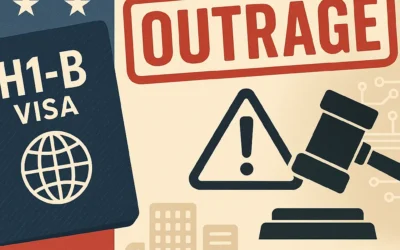NATO’s decision to raise defense spending to 5% of GDP is a game-changer. This bold move, with Spain’s support, marks a significant shift in the alliance’s defense strategy. But what does this mean for NATO and global security?
Why the 5% of GDP Defense Spending Threshold?
For years, NATO’s defense spending target has been 2% of GDP. Many countries have struggled to meet it. While some, like the U.S. and U.K., have exceeded it, others, including Germany and Italy, have fallen short due to economic constraints.
But rising threats from Russia, China, and other non-state actors have changed NATO’s approach. With the global military landscape evolving and new threats emerging, 2% is no longer enough. The 5% GDP target is a response to the growing need for military readiness and modernization.
What Does This Mean for NATO Members?
NATO’s agreement on the 5% GDP threshold will impact member countries in different ways. Some, like the U.S. and U.K., already spend more than 5%. They’ll likely welcome the agreement, as it strengthens NATO’s global influence. For others, especially smaller members, this will require significant budget reallocations. Countries like Spain, which have historically supported higher defense spending, see this agreement as a step toward greater fairness in defense contributions.
However, this move may spark political debates within NATO nations. Some countries may face economic challenges in meeting the new target, requiring financial support or diplomatic pressure.
Reassessing Global Security
This decision to increase defense spending comes at a time of rising global instability. The 5% GDP target will have significant effects on global security.
Deterrence Against External Threats
NATO’s primary goal is to protect its members from external aggression. By increasing defense spending, NATO aims to enhance its deterrence capabilities. This will be especially important in regions like Eastern Europe and the Pacific, where military tensions are rising.
The 5% defense spending threshold ensures NATO’s military readiness to respond quickly to growing threats from Russia and China, both of which have increasingly aggressive military postures.
Cybersecurity and Technological Warfare
As warfare evolves, so must defense strategies. The integration of cyber warfare, AI, and advanced missile defense systems is critical for maintaining military superiority. The 5% GDP threshold ensures NATO has the resources to invest in these technologies and stay ahead of emerging threats.
Global Influence and Solidarity
This decision reflects NATO’s growing importance in the global security landscape. By committing to a unified defense budget, NATO members signal their solidarity and commitment to mutual security. This may encourage non-member countries to rethink their defense strategies.
Moreover, the increased spending may allow NATO to enhance its military capabilities, strengthen alliances, and project power globally.
Impact on Global Trade and Diplomacy
The 5% defense spending commitment is likely to influence global trade and diplomacy. As NATO strengthens its defense capabilities, it may lead to changes in trade patterns and diplomatic relationships. Countries may adjust their foreign policies to align with NATO’s increased military presence.
Additionally, NATO’s expanded budget could spark competition with non-NATO countries, especially in military-industrial sectors. This could trigger a new arms race in regions like Europe, Asia, and the Middle East.
Potential Challenges for NATO and Its Members
While the 5% defense spending target is a necessary step, it comes with challenges. Smaller nations may face difficulties in meeting the new target, especially those with weaker economies. Countries with political unrest or budget constraints may require financial aid or diplomatic solutions.
The burden-sharing debate within NATO is also likely to intensify. Wealthier nations may face higher contributions, while smaller states may need assistance to meet the new threshold.
What’s Next for NATO?
NATO members must prepare for this new phase of military readiness. To meet the 5% GDP target, NATO will need to manage resources efficiently, invest in emerging technologies, and ensure unity among its diverse members. The alliance must balance military investments with the economic needs of its members.
The future of global security depends on NATO’s ability to adapt to rising global threats. The alliance’s ability to remain cohesive, effective, and ready to act will determine its success in the coming decades.
Conclusion
NATO’s decision to set a 5% GDP defense spending threshold is a bold step that will reshape global security. The increased spending will strengthen NATO’s defense capabilities and help the alliance counter growing global threats. However, the move also brings challenges. Countries will need to navigate the financial and political complexities that come with increased defense commitments. The success of this strategy will have lasting implications for international stability, trade, and security dynamics.
Did you find this article insightful? Subscribe to the Bullish Stock Alerts newsletter so you never miss an update and gain access to exclusive stock market insights: https://bullishstockalerts.com/#newsletter
Avez-vous trouvé cet article utile ? Abonnez-vous à la newsletter de Bullish Stock Alerts pour recevoir toutes nos analyses exclusives sur les marchés boursiers : https://bullishstockalerts.com/#newsletter








0 Comments